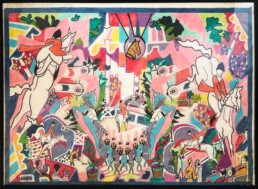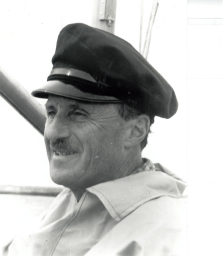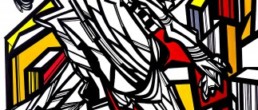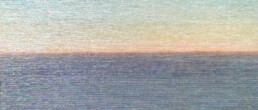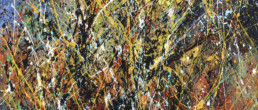Charles Lapicque
1898–1988 (France)
Biography
A pioneer of color and modernity
Painter, engineer and free thinker, Charles Lapicque is one of the singular figures of twentieth-century French art. His colorful, dynamic and resolutely modern work occupies a prime position in the post-war artistic landscape, at the crossroads of free figuration and abstraction. Charles Lapicque occupies a singular place in the history of French modern art. His work, at once erudite, inventive and accessible, continues to be actively sought after by collectors and institutions, both for its plastic quality and for its seminal role in post-war painting.
A dual training in science and art
Born in Theizé (Rhône) in 1898, Charles Lapicque trained as a scientist at the École Centrale, while at the same time nurturing an early passion for painting. His atypical path from engineer to artist reflects a rational approach to light and color, which he explored through a personal theory influenced by the work of his uncle, physiologist Louis Lapicque.
A distinctive style
From the 1930s onwards, Lapicque developed an original style based on the subjective, expressive use of color. He overturned the codes of classical perspective, emphasizing optical sensation and emotional memory over realistic representation. His works vibrate with vivid tones, laid down in flat tints or modulated touches, and convey a joyful, sometimes almost childlike universe, imbued with poetry.
The post-war creative explosion
It was after the Second World War that Charles Lapicque found full recognition. From 1940-1950, he exhibited regularly in Paris (at Louis Carré, Denise René, then Maeght) and took part in numerous international events. His seascapes, religious and mythological scenes, portraits and urban landscapes make him a painter deeply rooted in his time, yet fiercely independent of mainstream trends.
A singular plastic language
Lapicque‘s work is characterized by free figuration structured by color, in a balance between narrative, structure and spontaneity. He deliberately distances himself from the dominant movements, while anticipating certain aesthetics of the 1960s and 1970s – notably narrative figuration and Pop Art – through his use of synthetic forms and bold colors.
In addition to painting, Lapicque produced over 500 engravings (lithographs and etchings) between 1945 and 1974, illustrated several books, and created sculptures and tapestries in the 1970s. He continued to exhibit actively until the 1980s, notably at Galerie Villand & Galanis.
Charles Lapicque at Galerie Hurtebize
Galerie Hurtebize is proud to present works by Charles Lapicque, whose formal modernity and freedom of expression still resonate with astonishing relevance today. His visionary use of color and his taste for subject matter make him an essential artist of the 20th century.


